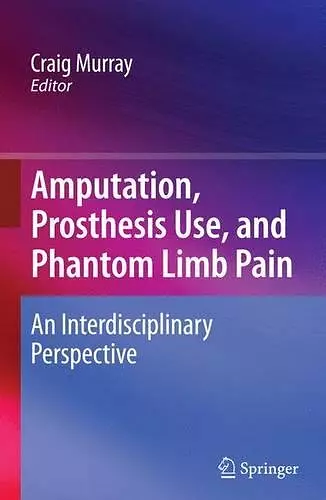Amputation, Prosthesis Use, and Phantom Limb Pain
An Interdisciplinary Perspective
Format:Paperback
Publisher:Springer-Verlag New York Inc.
Published:2nd Sep '24
Currently unavailable, and unfortunately no date known when it will be back

The main objective in the rehabilitation of people following amputation is to restore or improve their functioning, which includes their return to work. Full-time employment leads to beneficial health effects and being healthy leads to increased chances of full-time employment (Ross and Mirowskay 1995). Employment of disabled people enhances their self-esteem and reduces social isolation (Dougherty 1999). The importance of returning to work for people following amputation the- fore has to be considered. Perhaps the first article about reemployment and problems people may have at work after amputation was published in 1955 (Boynton 1955). In later years, there have been sporadic studies on this topic. Greater interest and more studies about returning to work and problems people have at work following amputation arose in the 1990s and has continued in recent years (Burger and Marinc ?ek 2007). These studies were conducted in different countries on all the five continents, the greatest number being carried out in Europe, mainly in the Netherlands and the UK (Burger and Marinc ?ek 2007). Owing to the different functions of our lower and upper limbs, people with lower limb amputations have different activity limitations and participation restrictions compared to people with upper limb amputations. Both have problems with driving and carrying objects. People with lower limb amputations also have problems standing, walking, running, kicking, turning and stamping, whereas people with upper limb amputations have problems grasping, lifting, pushing, pulling, writing, typing, and pounding (Giridhar et al. 2001).
From the reviews:
“The book consists of 12 chapters divided into 3 main sections that outline the multidisciplinary developments in the understanding and treatment of phantom limb pain. Each chapter is well written and provides references to key sources in the field. … This book is written for a variety of professionals and draws attention to the increased need for additional research in the area of phantom limb pain. The book has accomplished its goal of updating current understanding and identifying optimal, multidisciplinary treatments of phantom limb pain.” (Brian M. Kelly, Journal of the American Medical Association, December, 2ISBN: 9780387874630
Dimensions: unknown
Weight: unknown
203 pages
1st ed. 2010